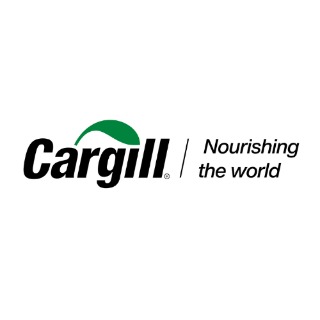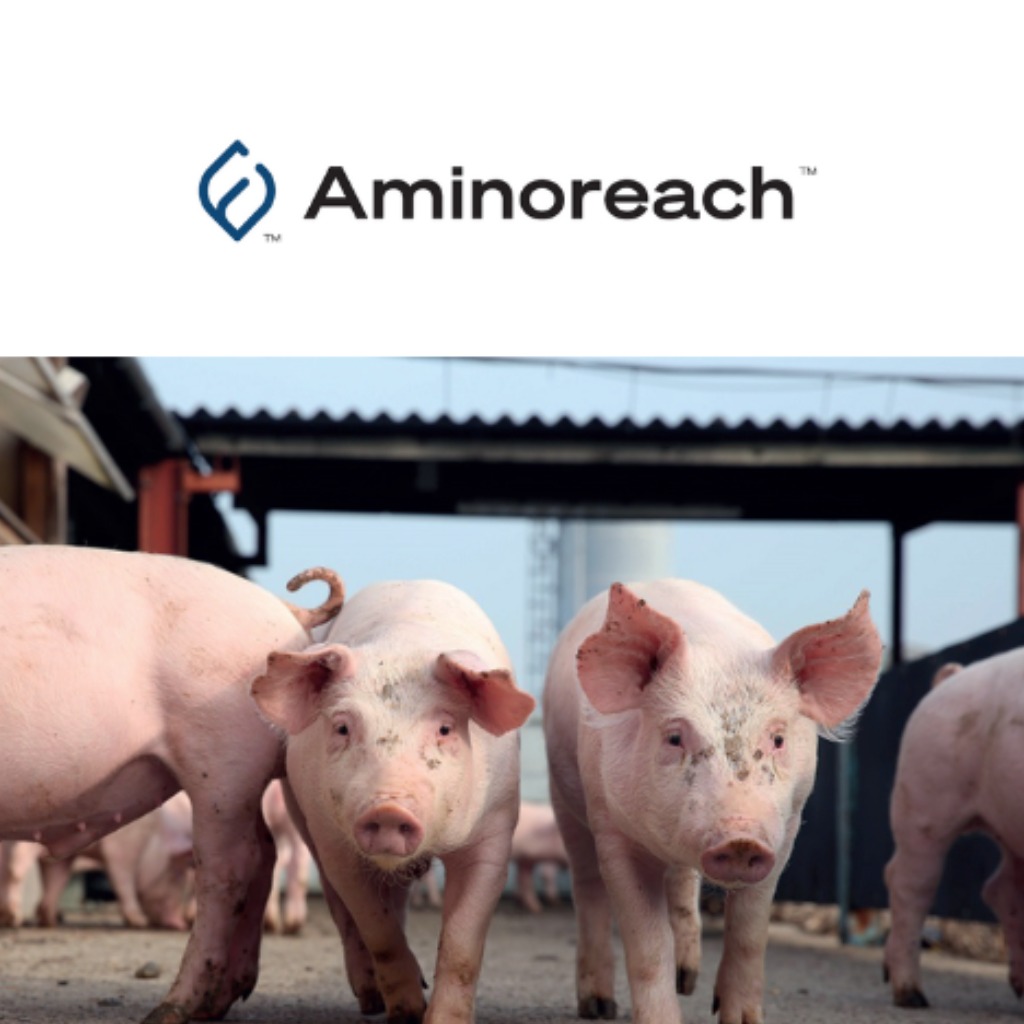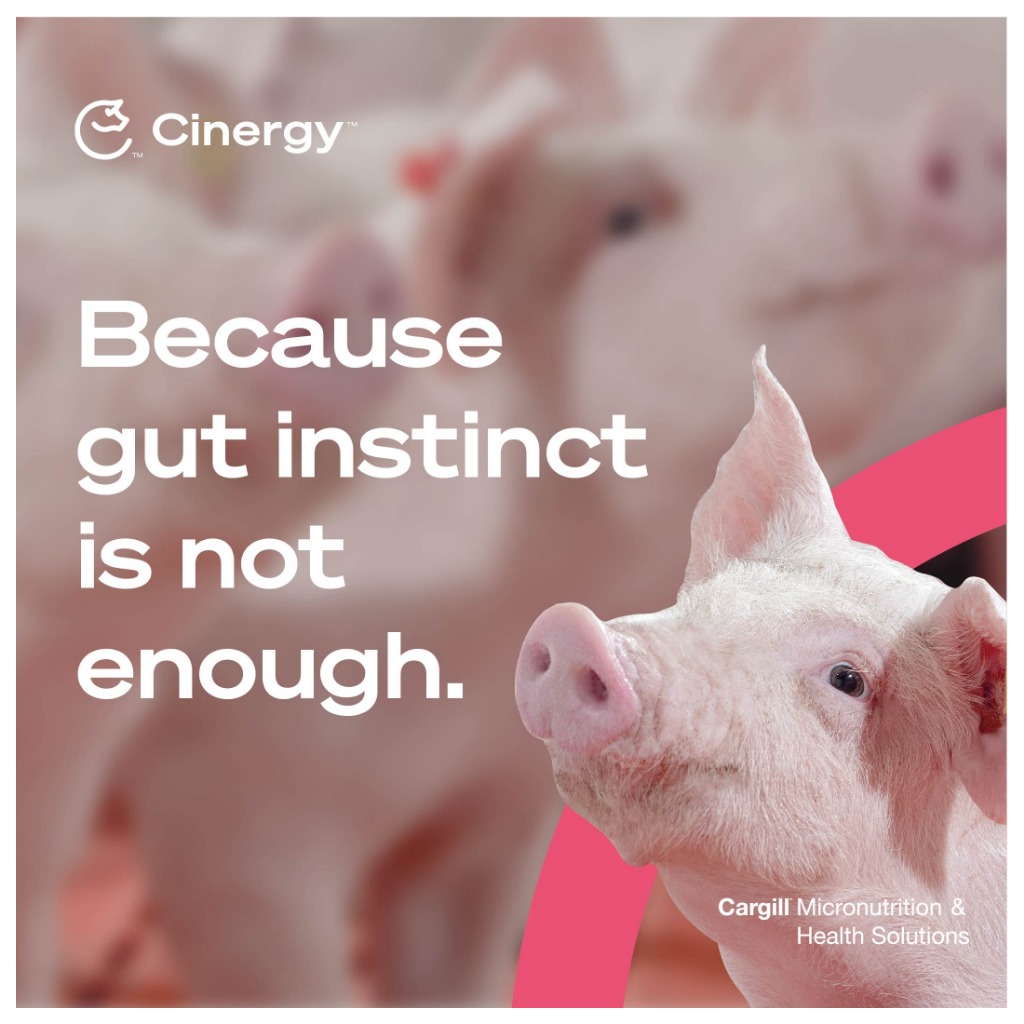It’s time to optimise protein costs and variability
Mixing in a blend of fermentation products and phytogenics in the formulation can make this possible.
The inclusion of protein in fattening pig diets is under review for three main reasons.
- An important one is feed costs. Protein sources like soybean meal (SBM) are expensive and volatile in price, putting pressure on feed and production costs.
- The second one is variability. Protein content in soybean meal (SBM) and other feed ingredients (such as by-products) can be inconsistent, which can lead to under- or over-supply of protein, affecting performance and health.
- Last but not least, we must consider the impact of farming practices on the environment. High protein levels can raise nitrogen excretion, carbon footprint, and health risks such as post-weaning diarrhoea...
How to prevent loss of amino acids
The key to safely lowering crude protein (CP) levels in pig diets while maintaining consistent performance lies in one principle: optimising protein and amino acid digestion. And luckily, there remains considerable room for improvement in this area. Protein digestion can be enhanced by using exogenous enzymes (such as proteases) or other fermentation products in the feed.
Pigs can also produce digestive enzymes themselves, which are released in the digestive juices. Studies have shown that certain phytogenic blends can stimulate the secretion of digestive juices and improve nutrient transport across the gut wall. So, what if we could formulate the optimal combination of fermentation products and phytogenics to support protein digestion, stimulate endogenous enzyme secretion, and maximise digestive efficiency?
Creating an effective mix for optimal digestion
Cargill Micronutrition & Health Solutions has longstanding expertise around fermentation extracts and phytogenic application, backed by vast phytogenics database and high-tech research and laboratory facilities to be able to screen, test, develop and validate ingredients.
This allows Cargill Micronutrition & Health Solutions to select the best fermentation products and exploit the synergy between active phytogenic substances. Combing these ingredients in the ‘effective mix’ led to the development of AminoreachTM Dual (hereafter ‘the product’), characterised for its large spectrum of modes of action and improved digestive efficiency (while protecting the active substances during feed processing).
This leads to 3 important benefits:
- Reduced feed costs, resulting from possibility to use lower CP in the diet via lowering SBM content or deploying alternative protein sources. Net saving will vary between 2-5 € / MT feed depending on the cost of protein sources.
- Smaller environmental impact: The product helps support environmental responsibility aims by reducing nitrogen emissions and the carbon footprint of pig production. Reducing dietary CP by using the product leads to a ~ 10 % reduction in feed carbon footprint and nitrogen excretion.
- Supported gut health: Due to the better digestion and nutrient utilisation, the product supports the reduction of undigested protein in the hindgut in piglets. This can help to reduce post-weaning diarrhoea or other gut related issues and helps to reduce associated performance losses.
Tested by renowned German institutes
The product has been subjected to performance and digestibility trials at renowned German Institutes. The LfL (Institute of Animal Nutrition and Feed at the Bavarian State Institute for Agriculture) tested the efficacy of the product (1kg/T) by reducing CP level (-0.5% CP). Average Daily Gain (ADG) was 3.9% higher than the pigs that received 0.5% less CP without the addition of the product. For Feed Conversion Ratio (FCR) a 0.02 improvement was seen (Figure 1).
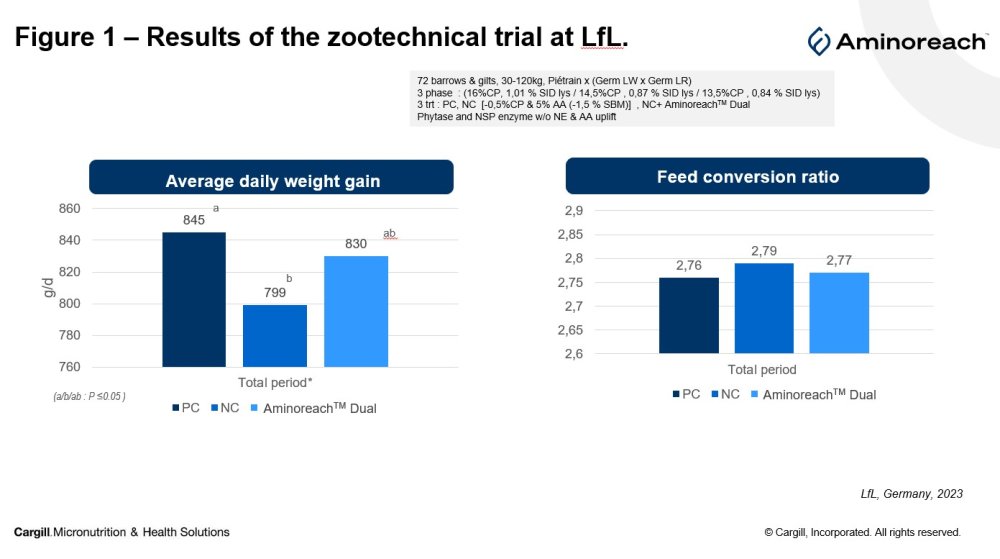
Also, the effects of the product on carcass weight and lean meat content were tested. LfL researchers showed that all pigs in the product group were in the optimal range of carcass weight and scored better in the optimal lean mean content (LMC) group. This led to a higher payout price per pig (+ €0.60 - €0.65, based on VEZG, Germany).
The Institute of Animal Nutrition of the Freie Universität Berlin (led by Prof. Dr. Jürgen Zentek) did a digestibility trial, and pigs either received a basal diet without the product or a basal diet with the product (1kg/T). The pigs were followed for 35 days (starting weight ~ 30 kg (70d) to end weight ~60 kg (104d)). This study showed that AminoreachTM Dual improves significantly the apparent ileal digestibility of total amino acids by +4.5%. This resulted in a significant improvement in overall body weight gain (+5.2%), in daily weight gain (+5.5 %). Moreover, the overall feed conversion ratio could be significantly reduced (-2.9 %), as shown in Figure 2.
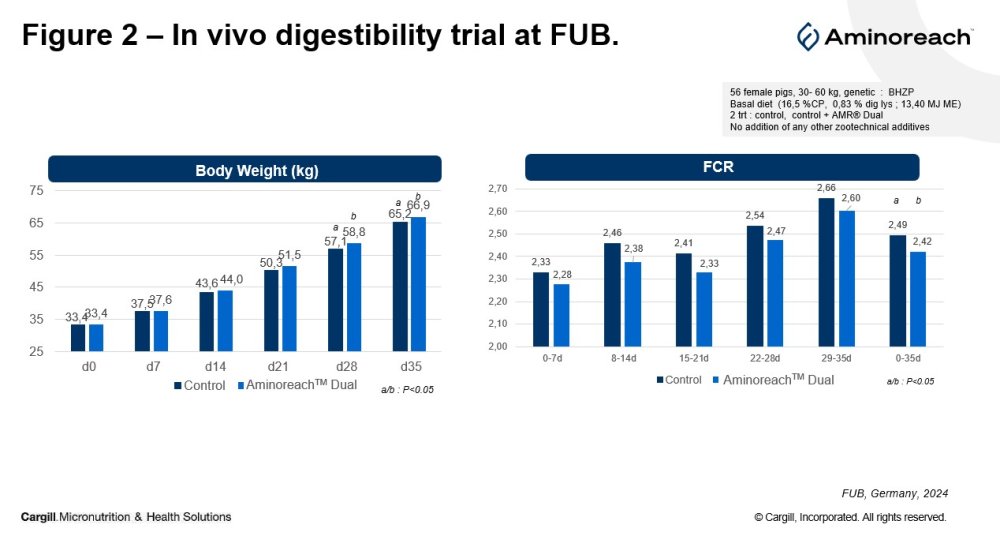
Conclusion
Swine producers face challenges with CP levels in diets, from cost volatility to sustainability and health concerns. To tackle these, Cargill Micronutrition & Health Solutions developed AminoreachTM Dual, a solution that optimises protein digestion, and is available to customers in Europe.
 Trials show CP can be reduced without sacrificing performance. Calculations indicate a 9.2% lower feed carbon footprint with the product, improving margins and nitrogen efficiency. The product was also recently awarded with a 1 star Innov'Space award at the international livestock show SPACE 2025 in Rennes, France. This important and prestigious award – in combination with rigorous trials from leading German institutes - underscores and reaffirms the value of the product, as well as Cargill Micronutrition & Health Solutions commitment to a high-performing and environmentally responsible livestock sector.
Trials show CP can be reduced without sacrificing performance. Calculations indicate a 9.2% lower feed carbon footprint with the product, improving margins and nitrogen efficiency. The product was also recently awarded with a 1 star Innov'Space award at the international livestock show SPACE 2025 in Rennes, France. This important and prestigious award – in combination with rigorous trials from leading German institutes - underscores and reaffirms the value of the product, as well as Cargill Micronutrition & Health Solutions commitment to a high-performing and environmentally responsible livestock sector.
Learn more about Aminoreach's features and benefits by clicking the image below:
products
Contact:
Contact us using the following form.

